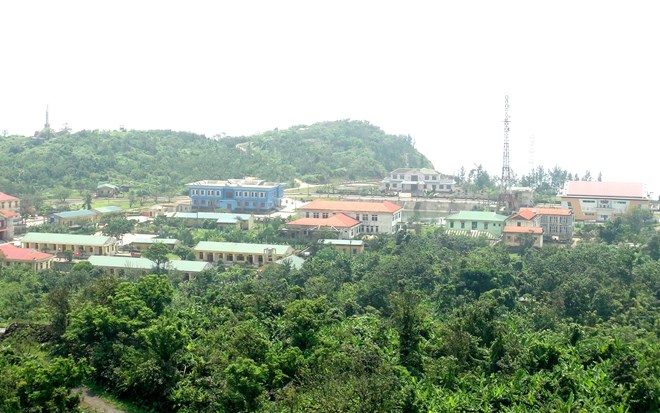



A view of Con
Co Island in Quang Tri province (Photo: VNA)
Con Co island, about 17 nautical miles offshore Cua Viet town, is
at the southern mouth of the Gulf of Tonkin and considered an outpost watch of
the country.
It takes about two hours for visitors to reach the island by boat. With many
beautiful pristine beaches, the 2.3-square-kilometre Con Co is an ideal place
for sea bathing and fishing.
Coral reefs including the rare red ones are found in the sea around the island.
Con Co is also covered by vast areas of primeval forests that make up 70
percent of the island’s total area with floral diversity.
The island is renowned as a fierce battlefield during the wartime in Vietnam,
with many relics still remaining such as a thousand-metre long tunnel.
When the night falls, visitors could stroll along coastal roads to enjoy the
fresh air and quiet atmosphere.
Tourists could experience homestay services in the island to explore the local
daily life and learn to make seafood dishes by themselves.
The Con Co island district was established in October 2004.
Over the past time, Quang Tri province has focused investment on building water
supply systems, medical centres, schools, residential areas and other facilities
to improve local lives.
The Electricity of Vietnam (EVN) has connected the island has been connected
with the national grid since August 2017.
Chairman of the district People’s Committee Le Minh Tuan said the connection
with the national grid has created positive changes for local socio-economic
development, especially tourism.
In 2017, Quang Tri announced a project to open the Con Co island tourism route.
In January 2018, the district’s People’s Committee signed a contract building a
high-speed boat to carry passengers to the island with a total investment of
over 22 billion VND (961,400 USD). The ship will be put into use in August
2018.
Con Co district aims to open 3-4 high-quality tour packages by 2020.
According to Vice Chairman of the Quang Tri People’s Committee Ha Sy Dong, the
province has called on investors to build infrastructure systems in Con Co and
develop various tourism activities such as coral snorkeling, visiting forests
and special species.
Source: VNA